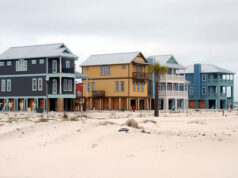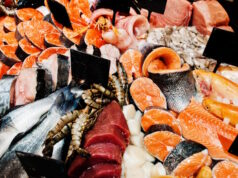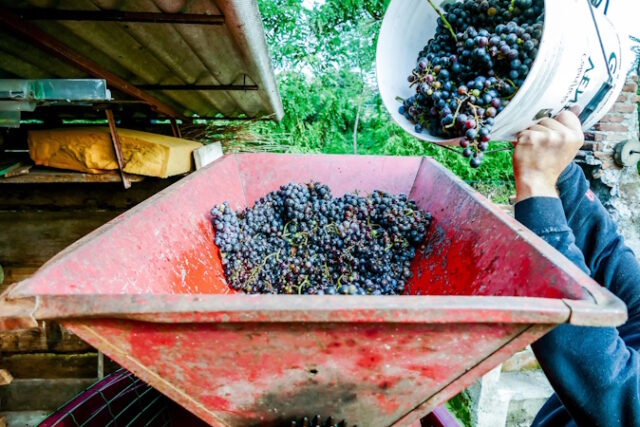
By Tom Marquardt And Patrick Darr
What’s old can be new, especially in winemaking. Fermentation and aging in concrete tanks — once popular in France in the 1950s and 60s — gave way to stainless steel fermentation and aging tanks in the 1980s. Today we see the use of concrete back in vogue in Europe and the U.S. Advocates for concrete cite concrete’s porosity and neutral quality to enhance the natural flavors in wine.
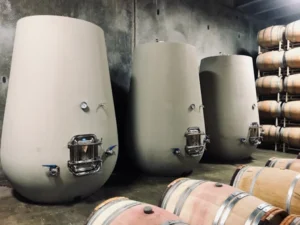
The country of Georgia produces wines with a twist: fermented and aged in qvevri or clay amphora-like vessels buried in the ground. The difference between the current interest in concrete fermentation vessels and this clay amphora is that the inhabitants of this former member of the USSR have been utilizing this technique for 8,000 years.
While only about 10 percent of Georgian wines are produced in qvevri, Georgia is the best-known country using this technique due to its long history with it.
Georgian wine producers also make white wines using a technique that is unknown in most winemaking regions. Instead of crushing the white grapes and separating the skins, seeds and stems, Georgian winemakers sometimes ferment everything from the grapes together, creating a unique white wine.
The result is a wine that is frequently referred to as an orange wine because of its coppery orange hue. In addition to the color difference, the orange wine takes on a more substantial flavor profile, frequently expressing the tannins from the grape skins and seeds. To some, these wines are an acquired taste but we find them appealing after pairing them with food.

Following are the Georgian qvevri wines we tasted and enjoyed:
Baia’s Tsolikouri Qvevri Georgia 2021 ($27-30). This is a light colored very dry wine with a touch of spritz. Peach and pear notes with a hint of lemon in a very palate-cleansing style. Made by Baia Abuladze, this is her only qvevri wine and it is made from 3 indigenous grape varieties.
Askaneli Muza Qvevri Orange Dry Wine Georgia 2019 ($37-42). This qvevri wine is a bit unusual in that it is finished in oak barrels. Made from 5 indigenous white grapes, it expresses apricot and orange notes with mild tannins in a medium-bodied style.
Teliani Valley Glekhuri Kisi Qvevri Kakheti Georgia 2020 ($22-25). Made from 100 percent kisi grapes. Light tannins with a pleasant astringency, this wine displays apple and peach notes in a light honey-colored package.
Armenian wines
Like Georgia, Armenia is a country that is emerging in the New World with grapes found nowhere else.
Voskehat and haghtanak are varieties difficult to pronounce let alone find in other wine-growing regions. Yet they produce wines with interesting flavors not tasted in chardonnay and other popular wines.
In the wind-swept vineyards high in the mountains, the vines grow in bushes low to the ground – similar to what we have seen in Greece and in the Canary Islands. The wines we recently tasted have unique characteristics that don’t compare to French varieties. Still, they are enticing for their freshness.
Armenia is one of the oldest wine regions in the world — an ancient cave found in the Areni region dates back to 4000 BC. When it was part of the Soviet Union, brandy and sherry were commonly produced, but none of it was exported to the West. Two wars interrupted wine production.
However once the Soviet Union dissolved in 1991, Armenian producers began to export their wines. However, by then, Italy, Spain and France were flooding the New World with their own wines. Armenia struggled to gain a foothold in the market here.
Today, however, Armenian wines are available in 30 states and online at www.storicawines.com.
Located between Turkey, Georgia, Iran and Azerbaijan, its wine regions are spread along its southwest border in vineyards up to 5,500 feet.
We were surprised by the wines we tasted. They may not have the complexity of French wines, but they are lean, elegant and refreshing. Here are a few we tasted:
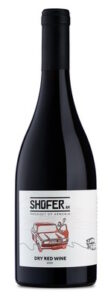
Keush Blanc de Blanc ($40). Having been disappointed by sparkling wine made in unfamiliar regions, we didn’t expect much from this version made from voskehat and khatouni grapes. Low expectations, high rewards. It was a broad expression of apple fruit with hints of toasty yeast, hazelnut and vanilla.
Noa White Blend 2021 ($30). This wine is planted at the base of Mount Ararat at the border between Turkey and Armenia. This wine, a blend of voskehat and khatouni, is inspired by a biblical reference in Genesis. Unoaked, it is simple and food-friendly with pear notes.
Shofer Areni Red Blend 2020 ($20). Also made from areni grapes, this wine has a floral bouquet and cherry, and plum flavors. Fine tannins and a hint of spice.
Van Ardi Estate Red 2019 ($28). This tasting blend of areni, haghtanak and milagh grapes shows off young red berry character with a good dose of chocolate.
Wine picks

Chalk Hill Sonoma Coast Chardonnay 2022 ($25). You get a lot for your money in this well-balanced and rich chardonnay. Pear flavors with a dash of spice.
Ferrari-Carano Fume Blanc 2022 ($21). We have seen this on the market for significantly less. One of the first two wines the producer started with 40 years ago, the Sauvignon Blanc has copious pineapple and white fruit aromas with fresh peach, pineapple and citrus flavors.
Louis M. Martini Napa Valley Cabernet Sauvignon 2019 ($55). Always a solid performer that sells for less than other premium cabernets from Napa Valley, this wine has a fruit-forward, richly textured character. Generous cedar and vanilla aromas with dark fruit flavors and a hint of anise.
Conde Valdemar Crianza Tempranillo Rioja 2018 ($20). Break out the tapas for this incredibly delicious and well-priced blend of 89 percent tempranillo, 7 percent mazuelo and 4 percent graciano. Try to stop at one glass – it’s that good. Blueberry aromas with blackberry and black currant flavors. Rich and dense, it would do well with a tuna appetizer.
Republished with permission
Tom Marquardt and Patrick Darr have been writing a weekly wine column for more than 30 years. Additional Wine reviews on MoreAboutWine
All photos are randomly selected and do not indicate any preferred wine. Listed prices are subject to change and do not include tax or shipping.
You can send questions to Tom Marquardt marq1948@gmail.com
Always drink responsibly![/vc_message]





